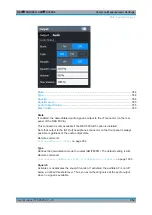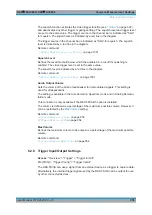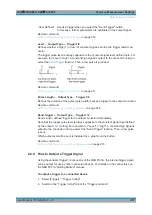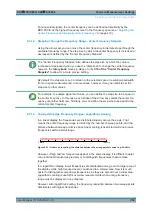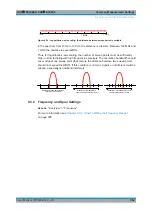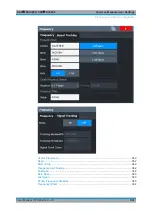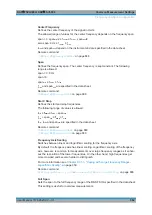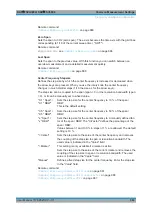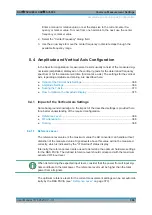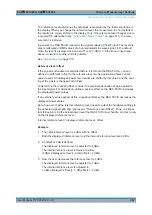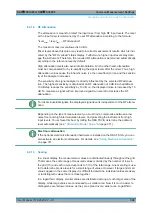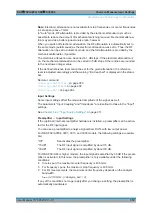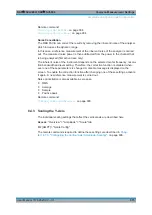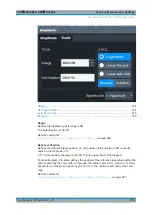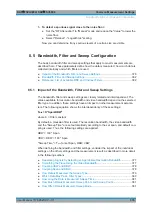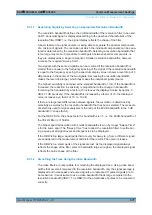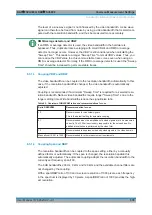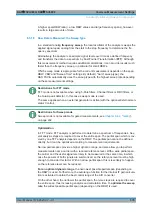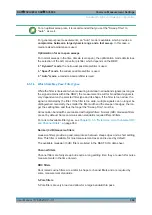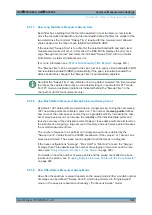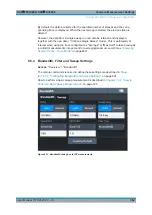
Common Measurement Settings
R&S
®
FSVA3000/ R&S
®
FSV3000
368
User Manual 1178.8520.02 ─ 01
8.4.1.2
RF Attenuation
The attenuation is meant to protect the input mixer from high RF input levels. The level
at the input mixer is determined by the set RF attenuation according to the formula:
"level
mixer
= level
input
– RF attenuation"
The maximum mixer level allowed is 0 dBm.
Mixer levels above this value may lead to incorrect measurement results, which is indi-
cated by the "RF Overload" status display. Furthermore, higher input levels may dam-
age the instrument. Therefore, the required RF attenuation is determined automatically
according to the reference level by default.
High attenuation levels also avoid intermodulation. On the other hand, attenuation
must be compensated for by re-amplifying the signal levels after the mixer. Thus, high
attenuation values cause the inherent noise (i.e the noise floor) to rise and the sensitiv-
ity of the analyzer decreases.
The sensitivity of a signal analyzer is directly influenced by the selected RF attenua-
tion. The highest sensitivity is obtained at an RF attenuation of 0 dB. Each additional
10 dB step reduces the sensitivity by 10 dB, i.e. the displayed noise is increased by 10
dB. To measure a signal with an improved signal-to-noise ratio, decrease the RF
attenuation.
For ideal sinusoidal signals, the displayed signal level is independent of the RF attenu-
ation.
Depending on the type of measurement you must find a compromise between a low
noise floor and high intermodulation levels, and protecting the instrument from high
input levels. You achieve this best by letting the R&S
FSV/A determine the optimum
Electronic attenuation
If the optional electronic attenuation hardware is installed on the R&S
FSV/A, you can
also activate an electronic attenuator. For details, see
" Using Electronic Attenuation "
8.4.1.3
Scaling
In a linear display, the measurement values are distributed linearly throughout the grid.
That means the entire range of measured values is divided by the number of rows in
the grid (10) and each row corresponds to 1/10 of the total range. Linear scaling is use-
ful to determine precise levels for a small range of values. However, if large and small
values appear in the same display, it is difficult to determine individual values precisely
or to distinguish values that are close together.
In a logarithmic display, smaller values are distributed among a much larger area of the
display, while large values are condensed to a smaller area. Now it is much easier to
distinguish several lower values, as they are spread over a wider area. Logarithmic
Amplitude and Vertical Axis Configuration

